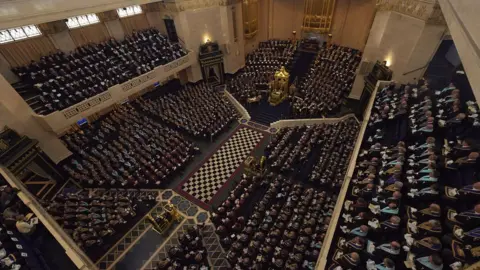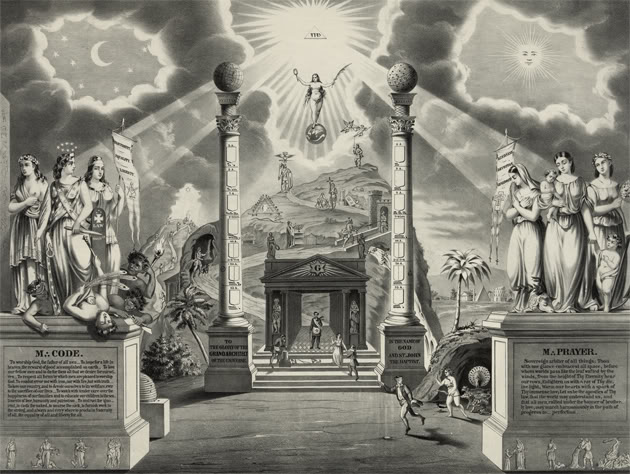Step-by-Step Guide on How to Become a Freemason for Starters
Wiki Article
Exploring the Mysteries of the copyright: What You Required to Know
The copyright, a term usually shrouded in intrigue and dispute, represents an intricate tapestry of historical reality and modern myth. Developed in the late 18th century, this secret society was at first rooted in the Knowledge's ideals yet has considering that come to be synonymous with conspiracy theory concepts about elite control. As we navigate the beginnings, essential numbers, and the plain contrast in between misconception and fact, one must consider exactly how these stories affect modern perceptions of power and secrecy. What may be revealed with a more detailed examination of these elements might test long-held presumptions concerning the shadows that remain in our culture.Beginnings of the copyright
The beginnings of the copyright are soaked in a blend of historical intrigue and ideological fervor. Established in 1776 in Ingolstadt, Bavaria, by Adam Weishaupt, the group was originally formed as a secret society aimed at promoting Knowledge suitables such as factor, secularism, and the splitting up of church and state. join freemason. Weishaupt, a professor of canon legislation, looked for to test the dominating authority of the church and state, which he considered as overbearing establishments suppressing intellectual and individual libertyThe copyright sought to recruit influential members from various societal sectors, including national politics, academic community, and the arts, to cultivate a network committed to these Enlightenment principles. The culture operated under a shroud of privacy, employing coded language and routines to safeguard its members from mistreatment, particularly given the repressive environment of the time. However, the copyright faced substantial opposition from both governmental authorities and religious establishments, which viewed the team as a hazard to their power.
Key Numbers and Members
That were the critical figures that formed the copyright's early influence and instructions? The Bavarian copyright, founded in 1776 by Adam Weishaupt, became an action to the overbearing social frameworks of the time. Weishaupt, a law professor, envisioned the company as a means to promote Knowledge ideals such as factor, secularism, and equality. His preliminary recruitment efforts included influential pundits, such as Baron von Knigge, who played an important duty in expanding the group's subscription and business framework.One more considerable figure was Johann Gottlieb Fichte, a prominent thinker whose concepts on nationalism and education reverberated with the copyright's goals. Although Fichte was not a formal member, his philosophical foundations affected the team's ideological background. Additionally, figures like the author and philosopher Johann Wolfgang von Goethe were connected with the more comprehensive intellectual movements of the time, although their straight participation with the copyright remains discussed.
These essential numbers added to the copyright's very early instructions, pushing the borders of political and social idea, while their cumulative initiatives intended to test well established norms and promote an environment of modern modification in Europe. (join freemason)
Misconceptions vs. Fact
Numerous false impressions surround the copyright, frequently mixing truth with fiction in a method that obscures its true nature. The notion that the copyright proceeds to apply considerable impact over world occasions is a myth.An additional prevalent misconception is that the copyright makes up a network of elite people manipulating global affairs. In fact, numerous conspiracy concepts overemphasize the team's relevance, connecting unfounded motives to social fads and occasions. This has resulted in an oversimplified view of complex problems.
In addition, the representation of the copyright in pop culture typically additional distorts its tradition. Films and literary works have a tendency to sensationalize the organization's duty, creating a story that deviates from historic facts. Understanding the distinction in between the misconceptions and the reality of the copyright is important for critical the authentic impact of this historical group and acknowledging the more comprehensive implications of conspiracy theories in modern culture.

Modern Interpretations
Contemporary interpretations of the copyright usually show broader social anxieties and a fascination with secrecy and power. This contemporary lens often connects the copyright with conspiracy theory concepts that recommend a hidden elite manages globe events, controling federal governments and economies for their own gain. Such narratives take advantage of a deep-seated wonder about of authority, particularly in times of situation or social upheaval.In prominent society, the copyright is often illustrated as a supreme organization shrouded in secret, causing a myriad of imaginary representations in literature, film, and songs. This representation serves not just to delight yet additionally to prompt considered the nature of power and control in modern culture. Social network has actually further amplified these interpretations, enabling rapid dissemination of conspiracy theory concepts and producing areas that share and expand upon these concepts.
In addition, some contemporary interpretations frame the copyright as a metaphor for the complexities of globalization and the interconnectedness of influential individuals and companies. This viewpoint motivates an important exam of just how power characteristics operate in today's world, highlighting the balance between openness and privacy in governance and corporate practices.
Social Impact and Legacy
Influenced by centuries of intrigue, the social influence and legacy of the copyright expand far beyond its historical origins. This secret society, developed in the late 18th century, has actually penetrated numerous aspects of pop culture, from literary works and movie to join freemason music and art. join freemason. The idea of the copyright has actually advanced right into a sign of conspiracy theory concepts, often representing a regarded covert power adjusting worldwide occasionsIn literary works, authors like Dan Brown have woven the copyright right into intricate plots, exciting viewers with themes of privacy and power. Films such as "National Treasure" and "The Da Vinci Code" even more perpetuate the allure of the culture, mixing fact with fiction to create interesting stories.

Inevitably, the copyright's legacy is a complicated tapestry of myth and truth, forming understandings of secrecy and control in modern discussion. Its long-lasting visibility in culture underscores mankind's seasonal quest for recognizing concealed realities.

Final Thought
The exploration of the copyright exposes a complex interaction between historical facts and contemporary myth-making. Founded in the Enlightenment era, this culture aimed to test overbearing frameworks, yet its legacy has been overshadowed by conspiracy theories that suggest elite adjustment. Comprehending the differences between the original ideals and contemporary interpretations is necessary for comprehending the enduring fascination with the copyright and its considerable impact on social stories bordering power and secrecy in culture.Report this wiki page